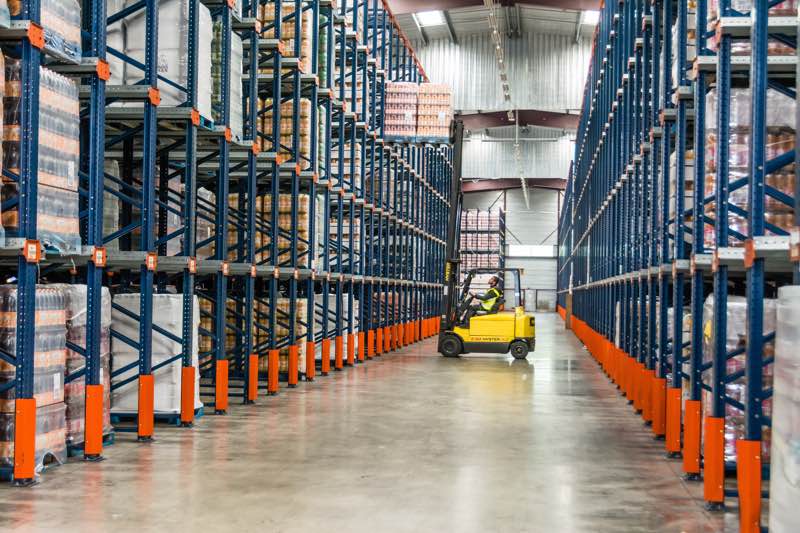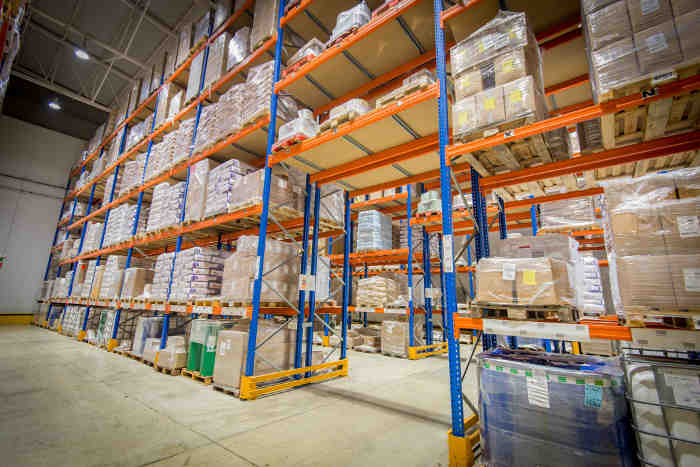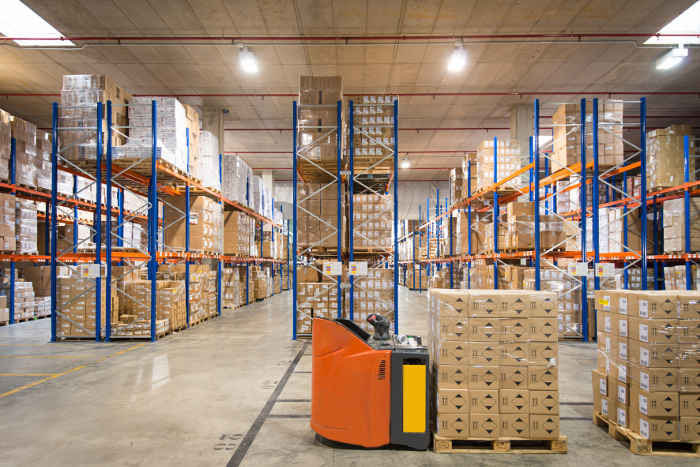A warehouse can be a dangerous place to work. The handling equipment used for goods handling is constantly moving between racks, working aisles and loads, and visibility is not always good. Additionally, in many cases unit loads are stored at height with the consequent danger of product falling to the floor.
Safety in your warehouse is everyone’s responsibility
We all share responsibility for safety in a workplace. It is key to make everyone aware that safety is as important as keeping to schedules, getting production out the door or meeting deadlines committed to with our customers.
What’s more, safety is not at odds with productivity or with meeting customer and company commitments. On the contrary, a lack of safety or a poor level of safety works against productivity and has negative economic effects in the form of damage to goods and injuries to people.
It is important to observe and respect safety signs and signals, and to be vigilant in improving working and safety conditions at all levels. Shortcuts” can save time, but they can also have fatal consequences.
If you have any doubts about the performance and load capacity of the racking, consult the nameplates that all racking installations must have.
Do not operate or use any storage or handling equipment for which you have not received adequate training beforehand
Training of workers, in addition to transmitting good practices, raises awareness of the risks involved in the use of storage equipment, as well as of the handling equipment that moves the equipment.
It is essential to understand that making changes in the configuration of metal racking entails modifying the performance in terms of maximum permitted load capacities or maximum admissible deformations that allow the installation to function correctly. Modifying the load levels of a racking system is easy and quick, but it can have serious consequences for the structure from a static point of view, and the consequences can be fatal.
Pay attention to loading units
Be careful not to exceed the maximum permissible weight. The racks are designed for a maximum load. If this is exceeded, the rack may be damaged and cause dangerous situations.
Another important element to watch out for is the pallet on which the goods to be stored are placed, generally made of wood. The pallet must be in perfect condition, without breaks or loose boards. In addition, it must conform to the dimensions and construction established in the regulations in force. The most common pallet is the Euro pallet and it is the type of pallet used for the design of industrial racking.
The use of non-standard or deteriorated pallets can compromise warehouse safety and cause accidents.
If a pallet is damaged, the unit load must be repalletised using a pallet in good condition.
Regular inspection and control of racking sytems
Industrial racks are highly optimised working equipment, built with narrow-walled, impact-sensitive, perforated steel profiles. Based on experience, we can assure that with normal operation, respecting the manufacturer’s instructions, it will be very difficult to prevent the main components such as the struts and beams from deteriorating.
This damage usually occurs during the loading and unloading of the load units. It is at these times that special attention must be paid. The manoeuvres of approaching the rack, depositing the load, and picking up the load units must be carried out with due care, avoiding hitting the rack.
If there is a blow, either from the machine or the load unit on the rack, be proactive, check it at the time and if it is observed that damage has been caused to the rack, immediately notify the person responsible for the safety of the storage equipment so that an initial assessment can be made.
Damaged and battered racks are weakened and unstable structures. If in doubt, it is recommended that the damaged area be closed, unloaded and not used, and that an expert be called in to assess the situation and the actions to be taken.
In addition to checking for knocks or damage, plan regular internal checks in accordance with your risk plan, as well as external inspections to be carried out by expert personnel.
Maintaining order and cleanliness
Keep both pedestrian and forklift crossings clear of obstacles. If an aisle has to be used for temporary storage on the ground, it is recommended to close it for the passage of forklift trucks until the aisle is free again and ready for traffic. Dirt and obstacles in general are a frequent cause of accidents.
Another factor to consider is the lighting, which must be sufficient for the activity to be carried out, taking care to avoid shaded areas.
At Noega Systems we are dedicated to the design, manufacture, installation and inspection of metal and industrial racking and all types of storage systems for warehouse. If your company needs advice in this area, do not hesitate to contact us.



